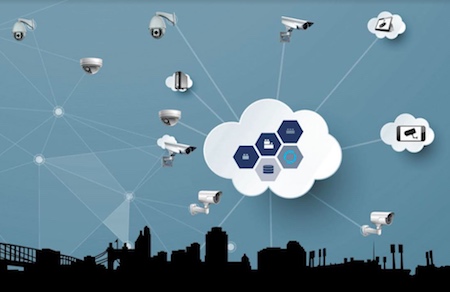
Today, enterprises across industries are looking for a highly scalable, efficient, and cost effective video surveillance solution. Traditionally developed Video Management Solutions have not been able to fully address the changing security needs of a business. This article discusses micro-services and its benefits in cloud based video management software and explains how micro-services architecture can overcome the functional limitations of traditional VMS solutions.
Traditionally architected video surveillance does not have the ability to address the upcoming security concerns faced by a business. With increasing agility in business processes, video management software (VMS) service providers cannot afford VMS application to be down, even for a short time. With single-tiered VMS (monolithic architecture), it is nearly impossible to meet the dynamic and evolving surveillance requirements of the modern businesses.
To overcome the functional limitations of a traditional Video Management software, based on monolithic architecture, and to explore vast business potential of cloud enabled video surveillance, VMS service providers are shifting towards micro-services based software applications.
What are micro-services?
Micro-services based architecture is a trending approach in software development. Unlike monolithic approach, where entire software application is designed as a single unit, in micro-services, big applications are built as a suite of modular services that remain integrated through APIs and work in integration to deliver overall functionality of the application. Since all the micro-services are independent, on development front, codes of different services can be written in different programming languages. Micro-services based applications are driven by the cloud infrastructure and their customer-focused services can lead to any specific business goals.
How micro-services based architecture can cater to the dynamic needs of a Video Management software?
Micro-services architecture as a foundation for video management software can give the software unimaginable modularity, ability to scale without down time of base application, and flexibility to meet any kind of video surveillance needs, across industries. Let us check out the advantages of micro-services in a cloud based Video management software:
- Agility: New business processes are very agile, so are their video surveillance needs. With evolving business environments, projects, locations, there can be a immediate need to upgrade the VMS application, without re-working on the entire software. Since, cloud Video management software is comprised of multiple micro-services, any particular micro-service can be easily upgraded, independently, keeping the other services intact. Agile development supports easy application updates and continuous delivery, even at the run-time.
- Easy Scalability: In a VMS application, scaling up of the individual components of the software can be done very easily using micro-services based architecture. Micro-services support both horizontal and vertical scale-up of the software.
Let us take an example of a cloud video management software for a super-market. For enhancing customer service, the management of the store wants to expand their VMS services to their parking lots. For this, they need to integrate an entirely new surveillance infrastructure (horizontal scale-up) with existing retail VMS via a new set of micro-services related to vehicle management. There can be many sub categories of vehicle management to be included and scaled-up (vertical scale-up) like license plate recognition, vehicle counting, object detection etc. On a software development front, all these applications can be developed independently using micro-services and can be integrated to main retail VMS solution.
- Fault Tolerance: If there is any fault in any of the micro-service of a cloud video management software, it will not affect other running applications. Unlike monolithic architecture, where even the smallest faults in a single application may result in failure of the entire application. Micro-services based applications provide redundancy and hence an un-interrupted service.
- Faster Development and Deployment: Every cloud based video management software is unique. It is the nature of the project that defines its structure. Whether it is a project for retail, fleet transportation or city surveillance vertical, cloud VMS structure is developed as per business needs. Micro-services architecture gives decentralized control of data & language and allows the developers to work simultaneously on independent VMS application modules. All the micro-services can be developed in different programming languages, which helps in faster development and deployment of the entire VMS application.
- Cost Savings: Micro-services based cloud VMS provides flexibility to choose the VMS services with changing needs of the business, hence allow the users to pay for what they use. Also, quick maintenance of malfunctioning applications and decreased downtime smoothens the business processes that results in increased revenue of the enterprise. Insights derived from the VMS system can also be used to improve business processes.
In a cloud based Video management software, micro-services can be categorized as Micro-services on Management Server and Micro-services on streaming server. Even video analytics features of the in a cloud based video management software developed as individual Micro-services of the software. A comprehensive micro-services platform can greatly enhance the performance of a cloud video management software by ensuring round the clock availability and independent lifecycle management.
eInfochips cloud based Video Management Software offers Micro-services based architecture to enable complete flexibility and customization in Video Surveillance. eInfochips Cloud VMS also offers full suite of Video analytics capabilities to meet customer requirement in retail, fleet transportation and city surveillance verticals.
About The Author
Anshul Saxena,
Senior Marketing Executive,
eInfochips
Find him on LinkedIn Here

